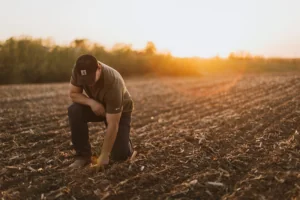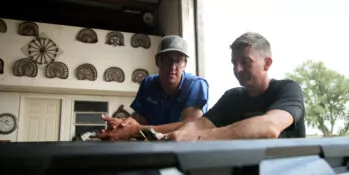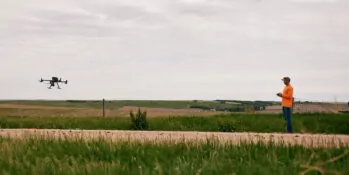

 For Central Valley Ag’s (CVA) Trevor Cox and his team, those weeks through April and into the first half of May are where the rubber meets the road. Those weeks see the recommendations that led to on-farm decisions and become reality—those weeks launch #Grow24.
For Central Valley Ag’s (CVA) Trevor Cox and his team, those weeks through April and into the first half of May are where the rubber meets the road. Those weeks see the recommendations that led to on-farm decisions and become reality—those weeks launch #Grow24.
As the regional manager for CVA’s Advanced Cropping Systems division, Cox describes his role as the “precision ag guy” for Kansas acres. He leads the company’s technology deployment and monitoring while helping farmers vet technology applications that can influence their operations’ productivity and profitability.

“With the technology available today, farmers can experience information and data overload. Data is only useful to farmers when they are able to use it and improve from it, and that’s where I’m able to help and where Taranis makes my job easier,” Cox explains. “I’ve been in this role with CVA for a year and a half, and their crop intelligence made a believer out of me pretty fast.
It goes without saying that what happens during #Plant24 will influence the success of #Harvest24. Those few weeks, in what we hope will be mid-April, of long hours will see farmers dialed into the weather and taking their meals on the go in hopes of getting a corn crop in the ground and off to a good start before the looming first week of May. But what happens after the planter has left the field establishes a critical threshold for corn crop performance…a threshold that is out of the hands of the farmer.
Uniform emergence is one of the first indicators of crop health during the growing season.

“The most recent research tells us that we really only have about a week,” Cox says. “The more plants in a field we can get up in that one-week span, the better uniformity will be. That first week will impact the rest of the growing season. And after that first week, if we don’t have even emergence, we’ll start to see yields take a hit, around 10% once we’re past that week-to-10-days.”
Knowing – being able to see – total field emergence elevates the playing field for both CVA and the farmers they work with. The first flight of the season shows every acre and every plant, or at least where every plant should be. The AI-driven imagery that provides a leaf-level view of disease and pest threats later in the growing season helps CVA and their growers determine replant needs and, often, catches planter issues.

“A Taranis image is eye-opening to us and to the farmers using it. You can drive by a field, and it looks green and pretty, but then you look at it in pictures, and you can see just how bad emergence is,” says Cox. “Guys have really gotten a lot of value from early-season flights – value that has saved their crop and paid for itself in the first flight.”

In early February, a federal court determined that the U.S. Environmental Protection Agency (EPA) had unlawfully approved dicamba for use over the top of emerged soybean and cotton crops bred to withstand the herbicide with the exception of the “existing stocks order,” allowing farmers planning to use dicamba products for 2024 to receive and use them during the upcoming growing season.

When Jon Bottiger moved back to manage the family farm after 20 years of navigating New York City, the Denton, Kansas native brought the shrewd business acumen he had developed managing a multi-million-dollar hedge fund to the rich soils of Doniphan County.

Welcome to the third and final blog in the series about AI in Agriculture, inspired by the white paper Agriculture and Artificial Intelligence: How to Effectively Implement AI in Precision Agriculture.